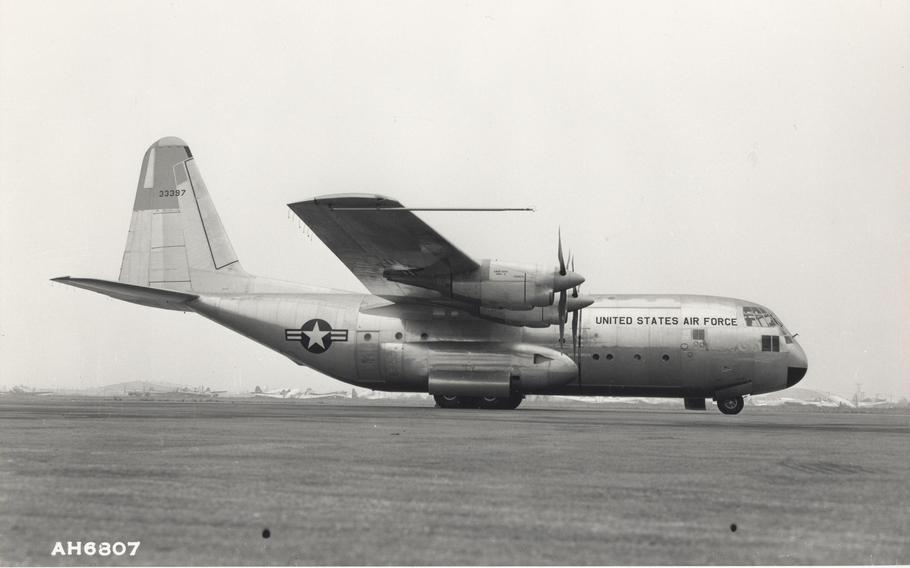
Archived photo of the YC-130 Hercules during its ferry flight from Burbank, Calif., to Edwards Air Force Base, Calif., on Aug. 23, 1954. (U.S. Air Force)
Seventy years since its first flight on Aug. 23, 1954, the C-130 Hercules has remained one of the most durable and versatile military aircraft in history. It has traversed every continent and been used by over 70 nations, and there is no sign its importance will diminish any time soon.
“It’s the greatest airplane ever built, and it’s stained honorably with American blood, sweat and tears,” Gen. Mike Minihan, commander of Air Mobility Command, said in an Air Force news release.
The contemporary Air Force fleet counts 436 of the aircraft, with 12 different models spread across seven major commands and the Air National Guard.
Approximately 50 of the aircraft undergo maintenance each year at Robins Air Force Base in Georgia, which hosted a 70th anniversary celebration for the aircraft. The base’s Warner Robins Air Logistics Complex is the main hub for depot maintenance and modernization of the C-130.
The C-130 was also honored at the Yokota Air Base in Japan, where the 36th Airlift Squadron and the Japan Air Self-Defense Force 401st Tactical Airlift Squadron took to the skies to commemorate the C-130’s maiden voyage.
The 374th Airlift Wing in Yokota emphasized the collaborative history of the C-130 in its own news release for the celebration. “Grandfathers, fathers, mothers, daughters, sons and grandchildren have all flown this aircraft,” said U.S. Air Force Capt. Sam Vincent, director of inspections for the wing.
The C-130 got its start in the aftermath of the Korean War, with U.S. Air Force Tactical Air Command realizing the force lacked medium cargo transport aircraft.
In the modern era, those roots in the Pacific are relevant again. The C-130 will be a key part of the Air Force’s call for a reorientation toward great power competition, with a particular emphasis on Agile Combat Employment and the Pacific.
Unlike the short-range flights that characterize operations in the Middle East, operations in the Pacific involve military hubs separated by vast expanses of ocean. Those tasked with modernizing the C-130 are considering how to improve engine power, fuel efficiency, propeller technology and weight reduction, among other things.
It is a challenge that will be welcomed by experienced hands: Robins Air Force Base has been repairing C-130 aircraft almost as long as the plane has existed, since 1964.
“Nobody else in the world does the repair and overhaul work that we do here at Robins,” said Ben Stuart, 560th Aircraft Maintenance Squadron director of operations.